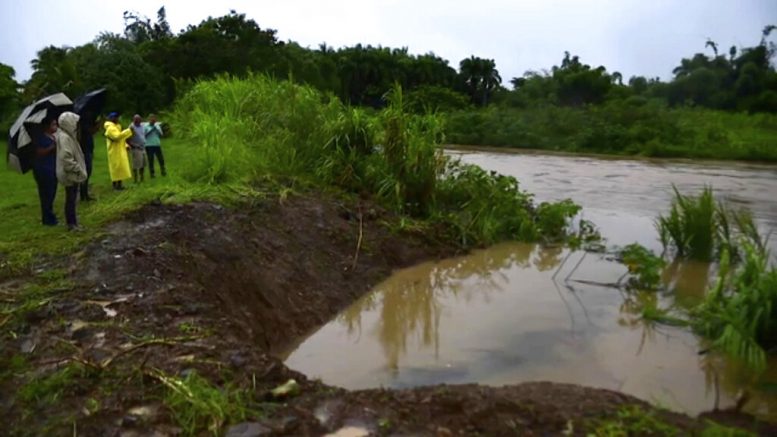SAN JUAN, Puerto Rico (AP) — Hurricane Isaias kept on a path early Friday toward the U.S. East Coast as it approached the Bahamas, parts of which are still recovering from the devastation of last year’s Hurricane Dorian.
Isaias had maximum sustained winds of 80 mph (130 kph) Friday morning and was centered about 340 miles (545 kilometers) southeast of Nassau in the Bahamas, the U.S. National Hurricane Center said. It was moving northwest at 17 mph (28 kph).
It was forecast to strengthen while moving near or over the Bahamas and it could near South Florida on Saturday and Sunday.
The forecast track shows the hurricane pushing north along the Eastern Seaboard through midweek.
The Hurricane Center said heavy rains associated from the storm “may begin to affect South and east-Central Florida beginning late Friday night, and the eastern Carolinas by early next week, potentially resulting in isolated flash and urban flooding, especially in low-lying and poorly drained areas.”
On Thursday, while still a tropical storm, Isaias toppled trees, destroyed crops and caused widespread flooding and small landslides in the Dominican Republic and Puerto Rico, where hundreds of thousands of people were left without power and water.
Officials reported that a man died in the Dominican Republic when he was electrocuted by a fallen electrical cable.
The Puerto Rico National Guard rescued at least 35 people from floodwaters, which swept away one woman who remains missing.
A hurricane warning was in effect for Andros Island, New Providence, Eleuthera, Abaco Islands, Berry Islands, Grand Bahama, Bimini, Acklins, Crooked Island, Long Cay, the Inaguas, Mayaguana, the Ragged Islands, Cat Island, the Exumas, Long Island, Rum Cay, and San Salvador.
Two of those islands, Abaco and Grand Bahama, were battered by Dorian, a Category 5 storm that hovered over the area for two days and killed at least 70 people, with more than 280 reported missing. People are still living in tents on both islands, and officials said crews were trying to remove leftover debris ahead of Isaias.
Prime Minister Hubert Minnis announced late Thursday that he was relaxing a coronavirus lockdown as a result of the impending storm, but said a 10 p.m. to 5 a.m. curfew would be implemented starting Friday. He said supermarkets, pharmacies, gas stations and hardware stores would be allowed to be open as long as weather permitted.
“These are especially difficult days,” he said during an online news conference. “We need at this time the spirit of love and unity.”
Stephen Russell, director of the Bahamas’ Emergency Management Agency, said there were no plans to evacuate people, but he urged those living in low-lying areas to seek shelter.
The Bahamas has reported more than 500 confirmed COVID-19 cases and at least 14 deaths. It recently barred travelers from the U.S. following a surge in cases after it reopened to international tourism.
Given the pandemic, the prime minister urged young people to stay safe from the approaching storm to respect social distancing measures.
“Please do not engage in hurricane or COVID(-19) parties,” he said. “It can be devastating.”
Isaias was expected to produce 4 to 8 inches (10 to 20 centimeters) of rain in the Bahamas and the Turks and Caicos Islands.
A tropical storm warning was in effect for the Turks and Caicos Islands and parts of the Dominican Republic.





























